Magical Siquijor Island
Reputations can be cruel. The island of Siquijor in Central Visayas is a victim of its fame as the vortex of black magic in the Visayas, if not of the Philippines.
Stories of victims falling ill from a cursed look or a hummed oracion (incantations) run aplenty. As a child, I grew up with tales of my superstitions yaya (nanny) who professed that the deadliest mambabarang (voodoo practitioners) practice their craft in the island. Most recently, I have a professional basketball player friend who related to me that he suffered from a mysterious stomach malady after a basketball friendly in Larena. He only got well the next day after he visited a local village healer. Fact or fiction?
What is true is this. Every Holy Week, numerous mananambal (faith healers) from all over the Visayas and Mindanao would converge loosely in the hinterlands of Siquijor. There, in the “sacred” peak of San Antonio, these healers would perform ancient rituals and mix secret potions of herbs, coconut oil, earthen powders, reptiles and other ingredients as (e.g., flowers taken from processional carrozas), cooking them over a kawa (cauldron). The effective balaanong adlaw (sacred days) would start on 3PM Good Friday, immediately after the commemoration of Jesus’ death through Black Saturday and pre-dawn Sunday. The long-standing belief is that creatures of the netherworld, now free to roam the earth without heavenly watch, would grace the healers with their powerful presence, making elixirs, whether for the good or bad, more potent.
A former colleague in the Chemistry Department of the University of San Carlos where I used to teach claimed to participate in this convergence at Siquijor several times. A PhD in Chemistry Education no less, he came from a family of healers from Leyte, another island of renowned enchantment repute. The “knowledge” he practiced was handed down to him from past generations, who like him, had to perform secret tahas (religious sacrifice). Indeed he would always disappear during Holy Week and whether in jest or not, he would later regale us with stories of offering dances made in the crack of dawn – or was it full moon? – at bodies of water like the Mananga River in Talisay where he lived.
These are the stuff that anthropological studies are made of. Even the Siquijor government acknowledges the practices, harnessing them as an effective tourist draw for the island. Is it safe to assume the healers now have a healthy tolerance for strangers watching over their pre-Hispanic animistic rituals? Perhaps.
It is with a mixture of curiousity that I visited Siquijor then. As usual it was work-related and unforgiving as my official schedule was, I could not indulge my cultural interest and visit any of the famed healers, or even visit the mountain of San Antonio and its balete trees where rituals are performed.
What I found out however is an unspoilt island that brags of virgin forests, empty stretches of white beaches and religious and gentle people. The island is small. I was there practically only for half a day, arriving in the evening and leaving by noon. Four hours and we were able to skim the sights, from the port of Larena in the north, through the eastern coastal towns of Enrique Villanueva and Maria with its spectacularly wide Candaping Bay, the southern town of Lazi and its famous stone church and convent, the biggest in the country, to the popular beach resort town of San Juan.
Definitely, I need to revisit the place, during summertime I hope. And why not on Holy Week? I would willingly be enchanted in so many other ways.
photos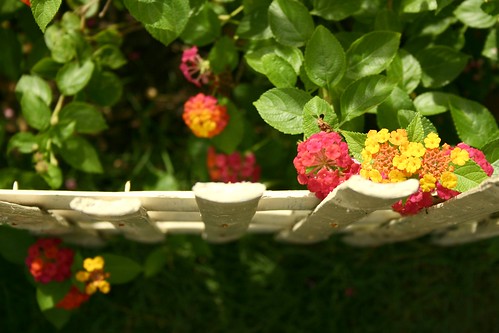
Canon EOS 350D Digital, 1/50s, f/5.6, 34mm, ISO 100
a flower garden in the Princesa Bulakna Beach Resort, Candaping Bay, Maria, Siquijor, the Philippines
phototip: Try a different perspective. Shoot straight down.
Canon EOS 350D Digital, 1/25s, f/4, 85mm, ISO 100,
a fisherman and his son at barangay Candaping B, Maria, Siquijor, the Philippines
phototip: Invest time and effort to know your subjects and to get them at ease. After some conversation, I got them to pose for me, and I even used a tripod.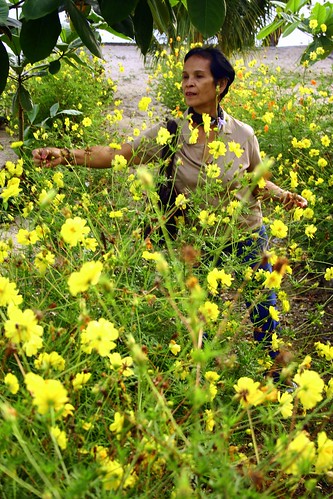
Canon EOS 350D Digital, 1/250s, f/5.6, 55mm, ISO 100
my mother gathering cosmos flower seeds at the Princesa Bulakna Beach Resort, Candaping Bay, Maria, Siquijor, the Philippines
phototip: I shot this at a low angle to highlight the flower patch.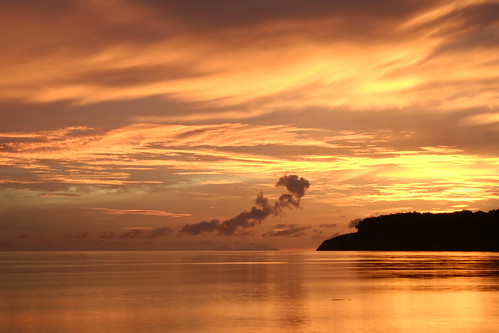
Canon EOS 350D Digital, 1.3s, f/22, 47mm, ISO 100, +1.3EV
sunrise at Candaping Bay, Maria, Siquijor, the Philippines (unprocessed, uncropped photo)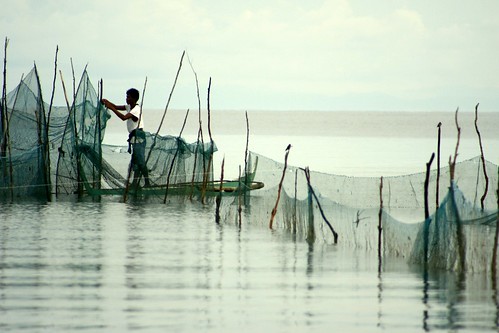
Canon EOS 350D Digital, 1/125s, f/5.6, 300mm, ISO 100
a fish pen at Candaping Bay, Maria, Siquijor, the Philippines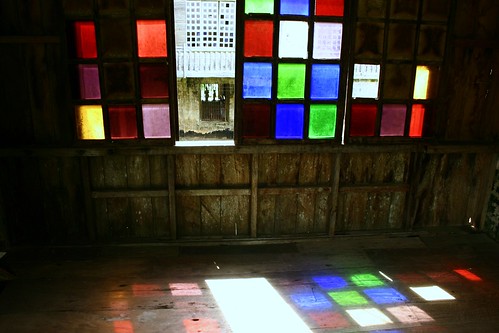
Canon EOS 350D Digital, 1/60s, f/5.0, 18mm, ISO 400, -1/3EV
an old window of the hallway leading to the kitchen of the convent of San Isidro Labrador Church, Lazi, Siquijor, the Philippines
phototip: Colored shadows always are interesting.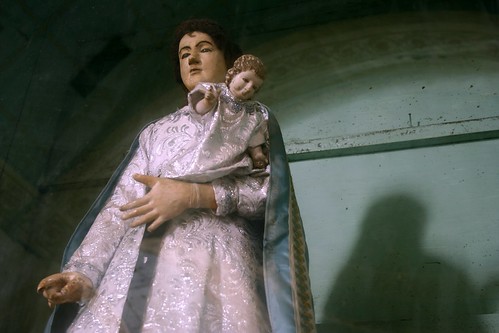
Canon EOS 350D Digital, 1.6s, f/5, 33mm, ISO 100
the Nuestra Señora Consolacion, San Isidro Labrador Church, Lazi, Siquijor, the Philippines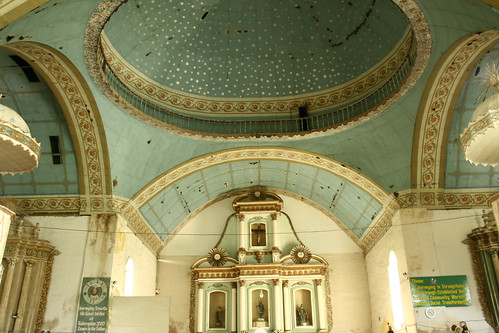
Canon EOS 350D Digital, 3.2s, f/11, 18mm, ISO 100
the altar of San Isidro Labrador Church, Lazi, Siquijor, the Philippines
That is an actual balcony at the base of the dome. A door can be seen off-center.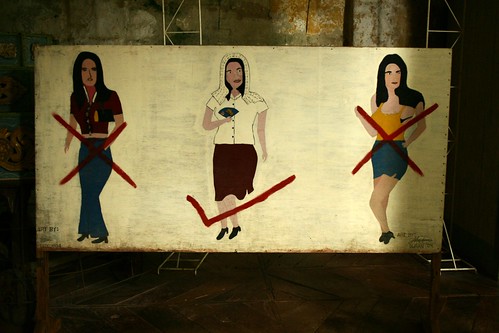
Canon EOS 350D Digital, 1/50s, f/4.5, 28mm, ISO 800
church dress code at San Isidro Labrador Church, Lazi, Siquijor, the Philippines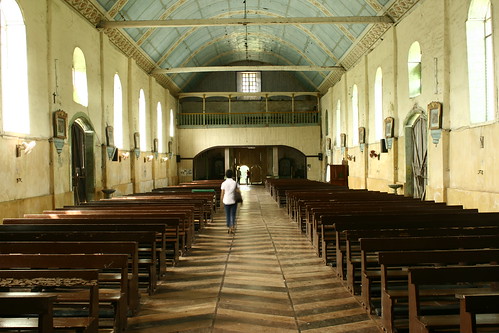
Canon EOS 350D Digital, 1.3s, f/11, 24mm, ISO 100, +1/3EV
the San Isidro Labrador Church, Lazi, Siquijor, the Philippines
Note the original hardwood flooring which is rare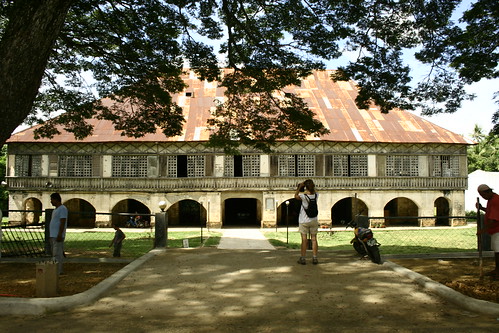
the convent of San Isidro Labrador Church, Lazi, Siquijor, the Philippines
Canon EOS 350D Digital, 1/80s, f/8, 18mm, ISO 100






8 comments:
wow bai pagkanindot tan awon sa bildo oi. murag magik...
the best!
more power n more pix!
Great pictures. So you too are or were teaching at USC? My husband used to be the Asst. Dean of the College of Engineering and head of the Pilot Plant in Talamban before we decided to leave for Mindanao.
Thanks for the wonderful shots.
Paalam.
Sigrun Campos-Engel
sigrum- thanks for your kind words. yes, I taught in USC for about 2 years (MS Chem) in the mid 90s. I'm glad you can relate to the photos and blog writeups. I appreciate your comments.
Farl
hi pouwh..siquijornon po ako peo laking mindanao.. Im proud that i came from that island..salamat po kasi binago mo image ng Island namin..
Hi..just wanted to ask something...
First, I would like to say...interesting page you got here.I just wonder if you happen to know or someone who might know..what to do to be protected from "mambabarang's"...are there any "oracion" against them??? or "pangontra"...I should say...I would be happy if you take notice of this message.Thank's and more power.God Bless You.
Even up to now, I know of some amulets, "pangontras" being peddled by street vendors near the big churches of Cebu. I can't tell you about their effectivity though.
Well, what can I say? It just made me feel more proud as a Siquijorian. Nice shots! Keep it up.
A BIG THANK YOU!!! Nice Job Farl... kindly visit cambugahay falls in your next tour...nearby lazi,,, a 5 minute walk going up from the falls is my birthplace, BRGY. TAGMANOCAN
Post a Comment